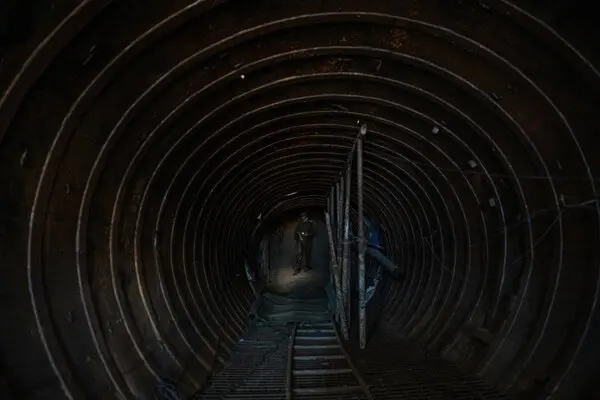The Israeli military claims to have uncovered tunnels beneath the primary headquarters of the UN agency for Palestinian refugees in Gaza City, asserting that Hamas militants utilized the space as an electrical supply room.
The recent unveiling of these tunnels represents the latest development in Israel’s ongoing campaign against the besieged agency, which it accuses of collaborating with Hamas. Israeli accusations that a dozen UNRWA staff members were involved in a Hamas attack on Israel on October 7th have plunged the agency into a financial crisis. Major donor states have suspended their funding, and investigations have been initiated. Additionally, Israel has frozen UNRWA’s bank account, halted aid shipments, and revoked its tax benefits.
The Israeli military hosted a media tour to view the tunnel on February 8, inviting journalists to witness the site firsthand. While the military did not definitively prove that Hamas militants operated within the tunnels beneath the UNRWA facility, they did demonstrate that at least a portion of the tunnel ran beneath the facility’s courtyard. The military alleged that the headquarters supplied electricity to these tunnels.
UNRWA Commissioner-General Philippe Lazzarini stated that the agency had no prior knowledge of the facility’s underground structures. He emphasized the necessity of an independent inquiry into the findings, but lamented that the ongoing war prevented the agency from conducting such an investigation.
The headquarters, located on the western edge of Gaza City, now lie in ruins. To locate the tunnel, Israeli forces employed a familiar tactic, overturning mounds of earth to reveal a crater-like hole leading to a small tunnel entrance. This unearthed shaft led to an underground passageway estimated by an Associated Press journalist to stretch at least half a kilometer, containing at least 10 doors.
At one juncture, journalists could peer upward from the tunnel through a hole and make eye contact with soldiers stationed in a courtyard within the UNRWA facility. Inside one of the UNRWA buildings, journalists observed a room filled with computers connected to wires extending into the ground. Soldiers then led them to an underground room where they claimed these wires were connected.
This underground chamber featured a wall of electrical cabinets adorned with multicolored buttons and lined with numerous cables. The military asserted that this room served as a hub for powering tunnel infrastructure in the area.
The tunnel extended beyond the section beneath the UNRWA facility, indicating its broader scope. Hamas has acknowledged constructing extensive tunnel networks across Gaza, which Israel views as crucial targets in its offensive. Israel accuses Hamas of using these tunnels to transport fighters, weapons, and supplies throughout the territory, often near civilian infrastructure.
Lazzarini reiterated that UNRWA was unaware of what lay beneath its premises, despite conducting regular inspections. He emphasized the agency’s humanitarian focus, lacking expertise or capacity for military inspections.
Journalists also observed amenities within the tunnel, including a small bathroom, shelves, and two small vehicles purportedly used by militants to navigate the tunnel network. The military disclosed that the tunnel, originating at a UNRWA school, measured 700 meters in length and 18 meters in depth.
Additionally, the military claimed to have discovered rifles, ammunition, grenades, and explosives within the facility, alleging its use by Hamas militants. Lazzarini clarified that UNRWA staff had not revisited the headquarters since evacuating on October 12th and remained unaware of its potential utilization.
Throughout its four-month campaign in Gaza, Israel has encountered similar makeshift accommodations within tunnels, underscoring their strategic importance to Hamas. The offensive commenced after Hamas militants attacked Israel on October 7th, resulting in significant casualties and hostage-taking. Israeli airstrikes and ground operations have since inflicted substantial casualties and widespread destruction in Gaza.
Exiting the facility, the devastation was evident, with virtually no intact windows, walls riddled with bullet holes, and debris strewn about. Touma, responding to Israeli allegations, condemned the occupation of UNRWA headquarters by the Israeli army as unjustifiable.
